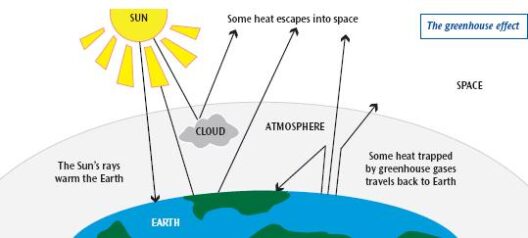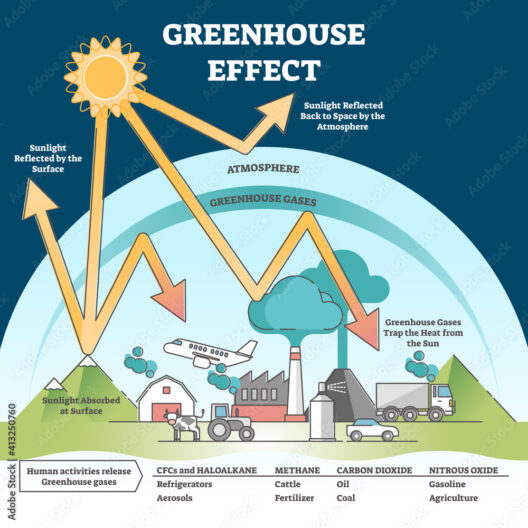The Paris Agreement, ratified in 2016, stands as a landmark accord in the fight against climate change. It exemplifies collective ambition among nations to mitigate the deleterious effects of global warming. As negotiators reached a consensus, they created a framework that is both ambitious in its objectives and pragmatic in its implementation. But as with any large-scale agreement, understanding its intricacies, costs, and the participants is pivotal.
What if you could pose a question to the nations of the world: “Are you committed enough to invest in a cleaner, sustainable future?” This query encapsulates a challenge that resonates with the essence of the Paris Agreement. The stakes are high, and the costs, both financial and environmental, are substantial.
The Framework of the Paris Agreement
The Paris Agreement aims to keep the rise in global temperatures well below 2 degrees Celsius, striving for a target of 1.5 degrees. Each country is tasked with defining and communicating nationally determined contributions (NDCs) to enhance global efforts. These contributions are a pivotal aspect of the deal. They are not legally binding but are rooted in a common desire for accountability and progress.
To facilitate this ambitious undertaking, the Agreement establishes a dual framework: a transparent system for reporting progress and a mechanism for regular review. This allows nations to up their ante for the climate, fostering a culture of continual enhancement. The transparency regime is essential, as it aims to build trust among countries, ensuring no one shirks their responsibilities.
The Financial Implications
One might wonder, “What are the costs associated with achieving the lofty goals of the Paris Agreement?” Financial commitments play a crucial role in bringing the daunting initiatives to life. Wealthy nations pledged to deliver $100 billion annually by 2020 to assist developing nations in climate adaptation and mitigation efforts. This figure is a mere fraction when compared to the trillions estimated to be needed globally to meet climate targets. Furthermore, finance must transcend mere economics; it must encompass technology transfer, capacity building, and the establishment of resilient infrastructure.
However, the challenge lies in mobilizing sufficient private sector engagement. Public funds alone cannot bridge the funding chasm. Innovative financing mechanisms, such as green bonds and climate risk insurance, need to be integrated to draw in private investments. Investors and stakeholders must be incentivized to prioritize sustainability in their financial portfolios. This leads to a crucial question: “How do we entice market players to transition from fossil fuels towards renewable energy sources?”
The International Community on Board
As of 2023, more than 190 countries are participating in the Paris Agreement, which showcases a broad coalition of nations. This collective engagement reflects a growing recognition of climate change as a global crisis. Notable participants include the European Union, whose ambitious Green Deal aligns closely with the objectives of the Paris Agreement, and emerging economies like India and China, which have committed to reducing emissions. However, notable absences or reluctance from certain nations, particularly the United States during the previous administration, posed potent challenges to global momentum.
To examine this landscape, one must reflect on the multifaceted political tensions and economic disparities that pervade international relations. The developed world often faces scrutiny for its historical emissions; meanwhile, developing nations plead for support to combat climate change consequences. Are these differences surmountable in pursuit of a common goal? The answer remains uncertain, yet dialogue persists.
Technological Innovations as Catalysts
Technological advancements are pivotal in realizing the goals set forth in the Paris Agreement. Innovations in renewable energy, such as solar, wind, and hydroelectric power, are crucial to reducing reliance on fossil fuels. Furthermore, the evolution of battery storage and grid management technologies enhances energy efficiency and reliability.
Moreover, carbon capture and storage (CCS) technologies are emerging as critical solutions to mitigate emissions from heavy industries. The burgeoning field of green hydrogen presents an exciting prospect for decarbonizing sectors that are traditionally challenging, namely shipping and aviation. The question lingers: “Can we accelerate technological adoption and commercialization while ensuring equity and access for developing nations?” The successful navigation of this conundrum may determine the viability of the Paris Agreement in the years to come.
Public Engagement and Advocacy
At the heart of climate action lies public engagement. Citizens wield significant power in mobilizing political will and demanding accountability from their governments. Grassroots movements, such as youth climate strikes and environmental awareness campaigns, are stirring a global consciousness around climate issues.
Yet, the critical challenge persists: how to maintain the momentum and passion witnessed in recent years. With numerous stagnant political climates, can public advocacy translate into concrete climate policies? The answer hinges on ongoing education and an inclusive discourse that embraces diverse voices, particularly those often marginalized in environmental dialogues.
The Road Ahead
As nations approach their next NDC submission deadline, the Paris Agreement will undergo further scrutiny and evaluation. The importance of revisiting pledges in light of scientific data cannot be overstated. A continued commitment to ambition is essential; half-hearted efforts will not suffice.
The Paris Agreement forged a critical alliance but faces ongoing tests. Economic disparities, technological feuds, and political reluctance threaten the fragile framework constructed. Ensuring that every nation—that has signed on and those yet to commit—aligns their actions with the spirit of the Agreement is vital for its success. As time marches on, the question remains: “Will we rise to the occasion and meet our commitments, or will climate change dictate the terms of our future?”
The future is uncertain, but collective resolve can shape a sustainable world if we embrace the challenge ahead.








